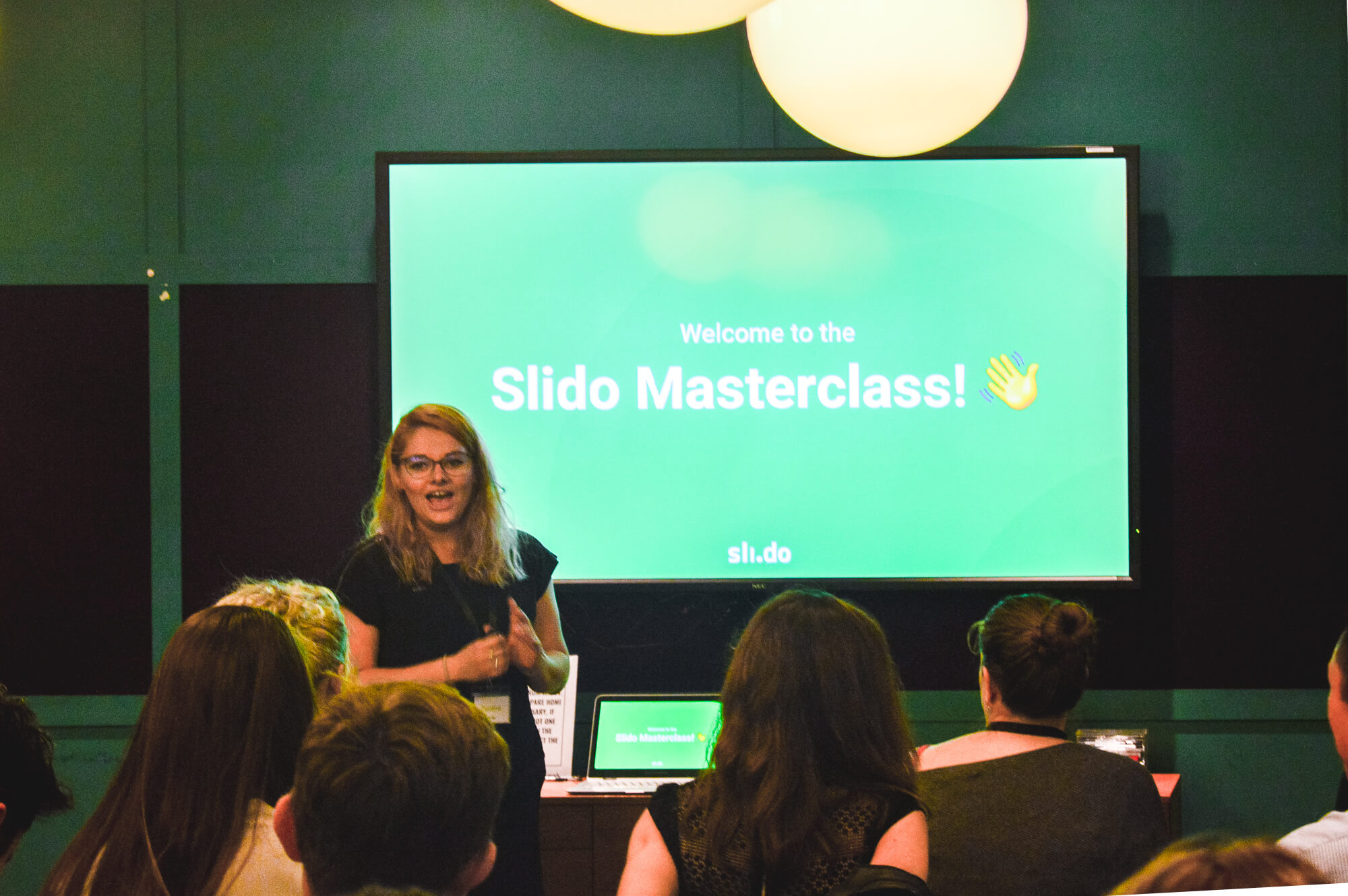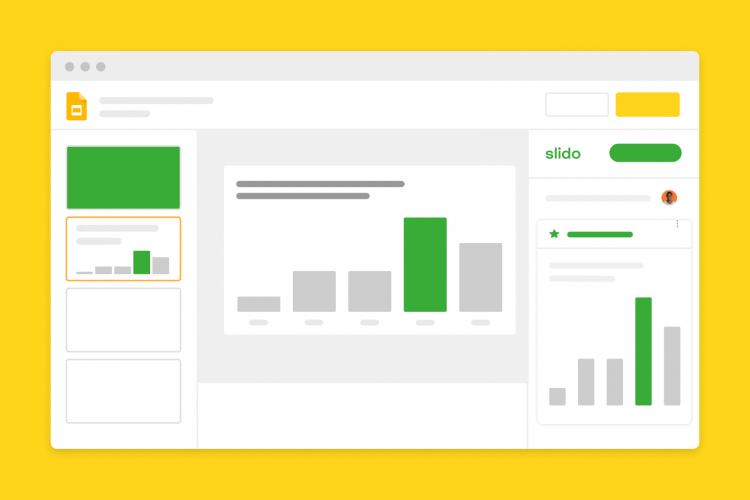The success of our clients is at the heart of everything we do. To keep our customers informed about product updates and help them make the most of their meetings with Slido, we designed a roadshow-like string of educational events – Slido Masterclasses.
From London to Singapore, our Masterclasses bring Slido users and prospective clients together to learn from each other. The attendees hear more about the product, talk about their challenges, share best practices and learnings, and network with each other.
For your inspiration, here is a recap of how we structured one of our recent masterclasses to help you make your next roadshow event a memorable experience brimming with interaction.
The why behind our Masterclass roadshow
As our Community Manager, Alex Neczliova, put it, “The main benefit of running a roadshow is the opportunity to have a face-to-face discussion with your customers or prospective clients and strengthen your relationships.”
For us at Slido, it’s a unique opportunity to gather our clients’ feedback, answer their questions, get to know their needs, and solve their challenges. And it helps us improve.
“Ultimately, our objective is to help our clients make their Slido experience the best it can be,” added Alex.
How we structured the Masterclass
We structured our latest Masterclass in London around five main parts, each of which was aimed at stimulating interaction and active participation of the attendees:
1. Icebreaker to kick off the event
To break the ice at the start, our Head of Education, Zuzana Bozikova, who facilitated the event ran three icebreaker polls to set the tone and get people to tune in. The polls triggered a few giggles in the audience. Here are two example questions we used:
How was your morning? (multiple-choice poll)
- Thank goodness for coffee!
- Slept like a baby
- Stuck in traffic
- Great, did some exercise
Two Truths and a Lie about Slido (multiple-choice poll)
- CEO Peter founded Slido when he was a university professor
- Slido was founded in a small village in Slovakia
- Slido tripled the number of events last year from the previous year
Before launching into learning sessions, it’s useful to get to know the audience better. We asked “What do you use Slido for?” in a multiple-choice poll to find out which use cases the people in the audience had come across. This helped us tailor the content to make it relevant to the people in the room.
For more inspiration, here is a list of example poll questions to kick off your next meeting.
2. Learning sessions tailored to the attendees’ knowledge
Once we had people’s attention, we split the group into three interactive learning sessions based on the attendees’ level of knowledge. This was to ensure that both beginners and advanced Slido users got the right training.
Slido 101 Training
Beginners got to grips with the Slido basics. This training session was a great example of learning by doing.
To gauge the level of experience with the product, we ran a rating poll at the start: How confident are you with using Slido right now? (Rating poll, 1-5, 1=not at all, 5=very confident)
Before launching the demos, we asked which features the attendees wanted to hear more about in a multiple-choice poll to ensure we deliver the right content.
Once we uncovered the audience’s priorities, our team did a live demo of each feature, focusing more on the top voted ones. Each participant was able to try it out on his or her personal laptop in real time. We encouraged people to ask questions throughout the session.
Tip: Let people know in advance if they need to bring their own devices. We included a note in our event description and invitations asking people to bring their laptops for this session.
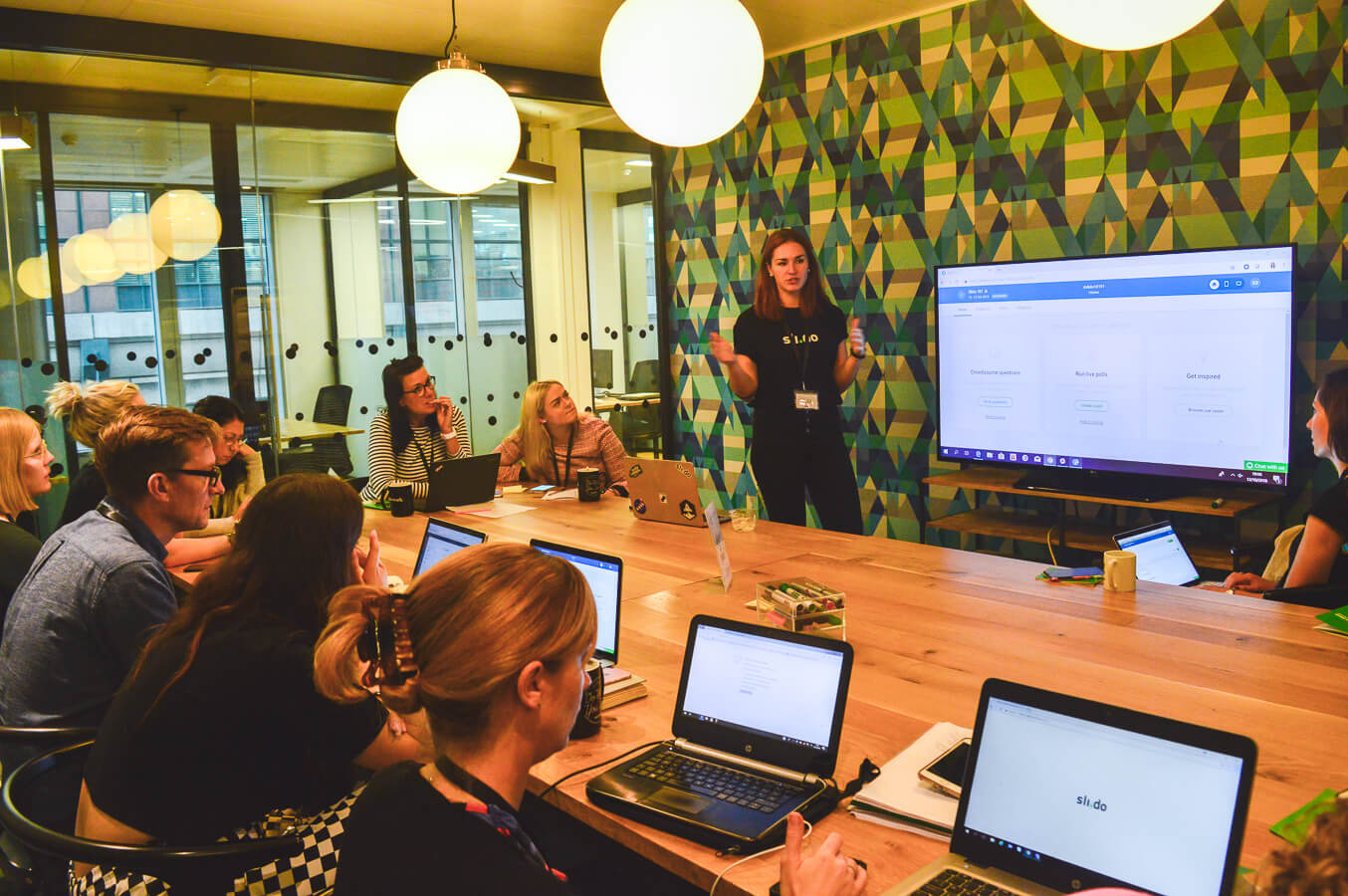
Scenario Cards
More advanced users joined a scenario-solving session. It was aimed at those who wanted to learn new techniques and tips for using Slido in an innovative way.
We seated the participants in a half-circle around a screen and handed out pre-prepared paper cards. Each card carried a solution that explained how to address a specific need or challenge. People took a minute to read their cards and think about a scenario where it could be applied.
Then, the Slido team members set out different scenarios and presented them on the screen. For example:
- I want to collect questions in advance of the meeting
- I want to report the collected poll results after our Town Hall
- I want to run an effective brainstorming session with my team
The attendee whose solution matched the scenario raised his or her hand and read it aloud to the rest of the group. There was space for questions and discussion throughout the session.
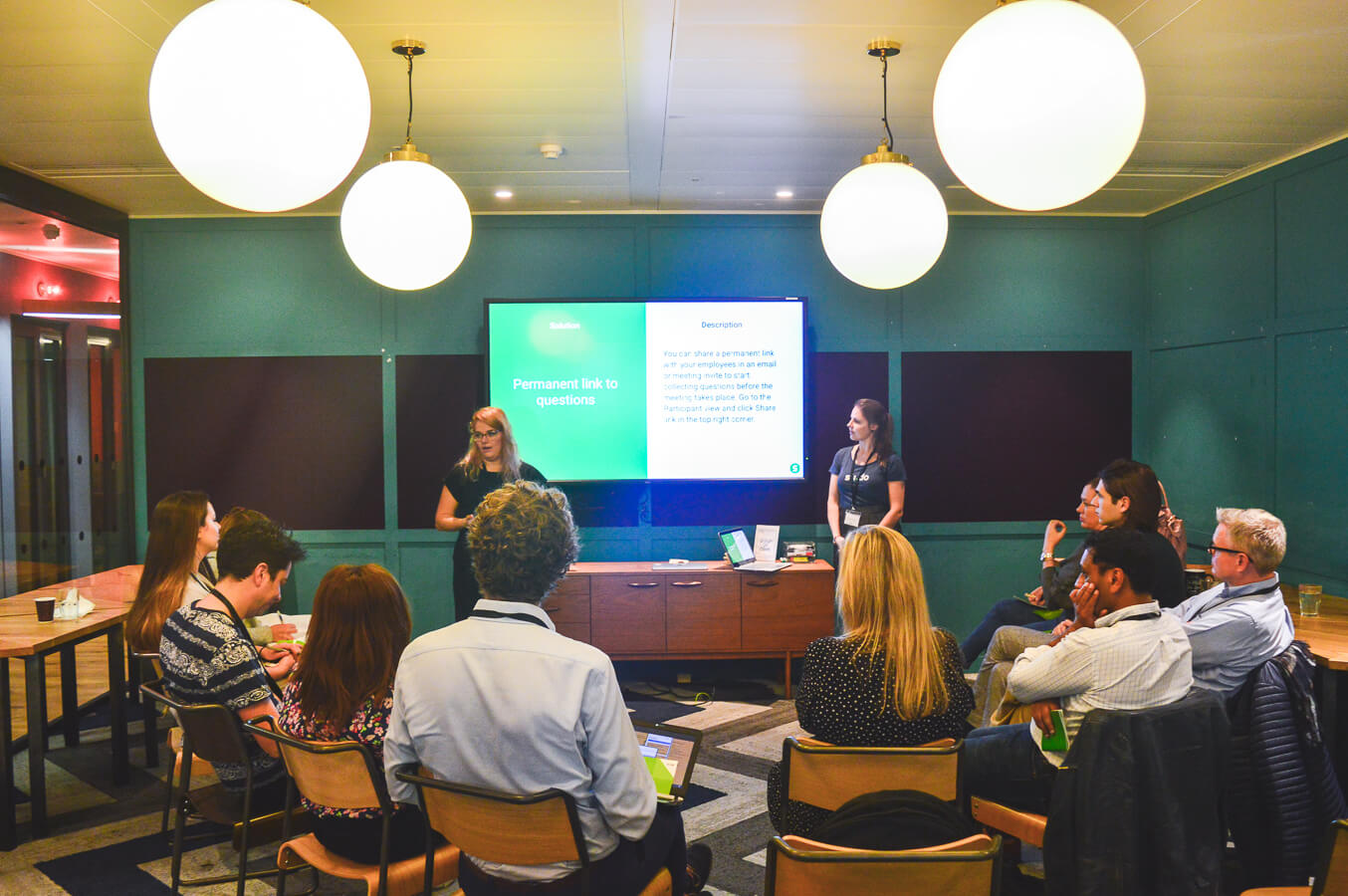
This exercise was a fresh and engaging way to help people learn how to address the different situations they might encounter with Slido. People seeking inspiration got to know different use cases and how they could put them into practice at their meetings.
Tip: Run a quick introductions round before kicking off the training session. It will help the attendees get to know each others’ background, enhance their learning process and lighten up the atmosphere.
Peer-to-Peer Sharing
The most advanced Slido users attended a peer-learning session. They shared their experience with the rest of the community and discussed the challenges they faced while using Slido. It was amazing to see people learning from each other and sharing their Slido tips.
The discussion was overseen by two Slido interaction experts who gave the attendees tailored advice and helped them find new solutions for their meetings.
Tip: As a general rule of thumb, peer-learning sessions work most effectively with smaller groups of up to 10 people.
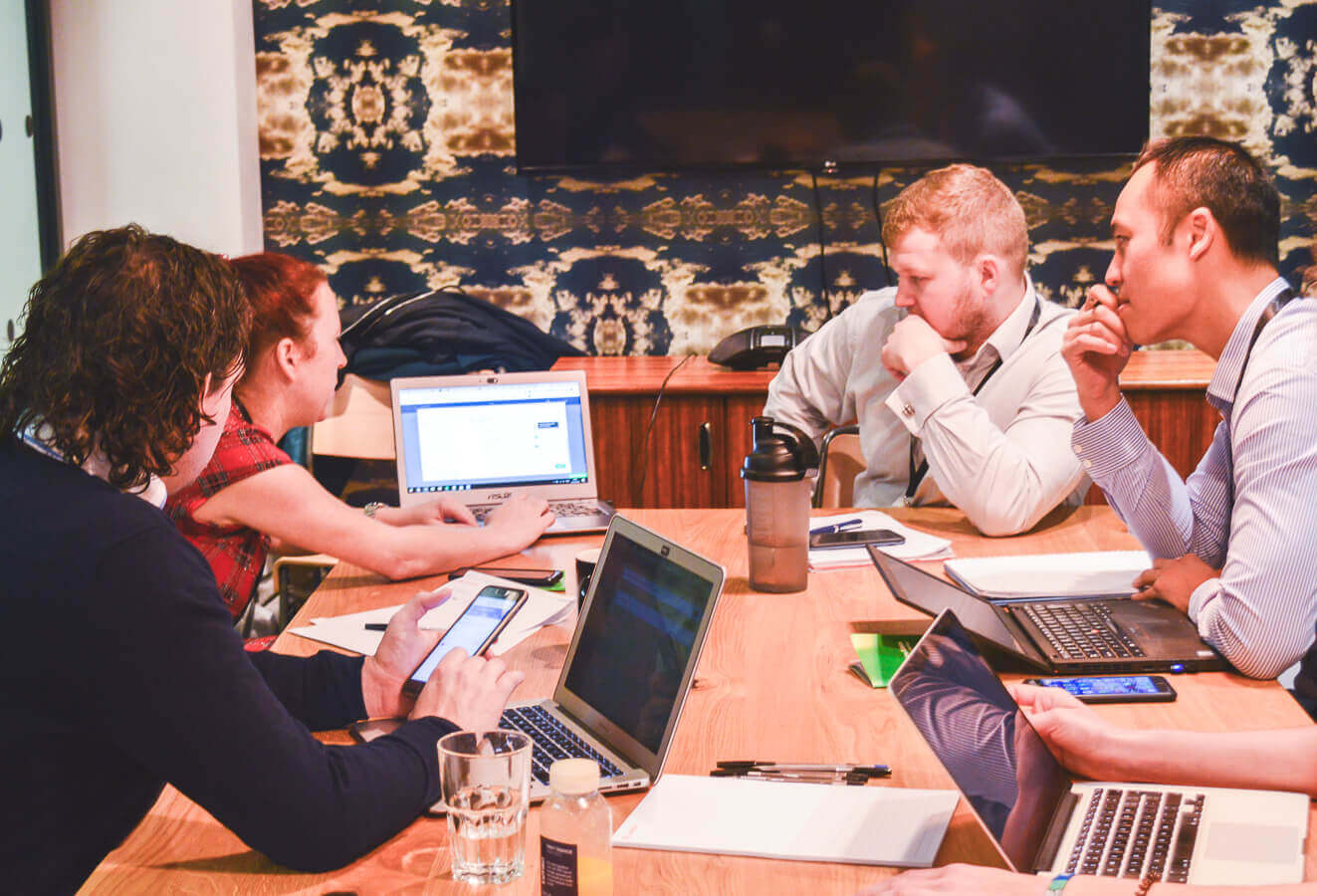
3. Product news and latest updates
To complete the learning process once the learning sessions were over, we presented the latest product updates and new features.
Rather than just speaking at people, we wanted to stimulate a two-way conversation with our clients. We asked what would help the attendees achieve their meeting or event objectives and collected suggestions with Slido Ideas. It was also a great way to show them how the new feature works in practice.
Once the ideas started flowing in, people upvoted the ones that they wanted to support. Seeing the top ideas helped us understand our clients’ needs better and see which feature requests we should consider next.
We also ran a poll on which features the attendees were most excited about, in order to check how they were received.
4. Short feedback survey
To help us improve, we collected people’s feedback and tips for future Masterclasses in a short survey on Slido before the end, while people were still in the room.
We were extremely pleased to see the attendees’ positive comments.
“Fantastic event. Appreciate the time. Great product and looking forward to seeing how Sli.do will continue to develop,” said one of the participants.
Others shared their comments on social media:
A huge shout out to @Slidoapp for their #Masterclass today. It was incredibly useful and informative. Get ready for some new elements to our events people!
— Travel Weekly Events (@Events_TW) October 12, 2018
Here are some example questions that we used in the feedback survey:
- Which learning track did you attend? (multiple-choice poll listing the session names)
- How useful was the session? (rating poll, 1-5 where 1=not useful and 5=extremely useful)
- What is the one thing you want to try at your next meeting? (open text poll)
- Do you have any suggestions on how the event or content could be improved? (open text poll)
5. Networking and client 1:1s with Slido team
Once the learning part was over, the attendees had a chance to have 1:1s with the Slido team members during the networking session at the end. It was an opportunity for our clients to voice their questions or concerns in private and receive tailored advice.
Many people stayed and used this opportunity to connect with the Slido team, get some final tips and clarify anything that was unclear.
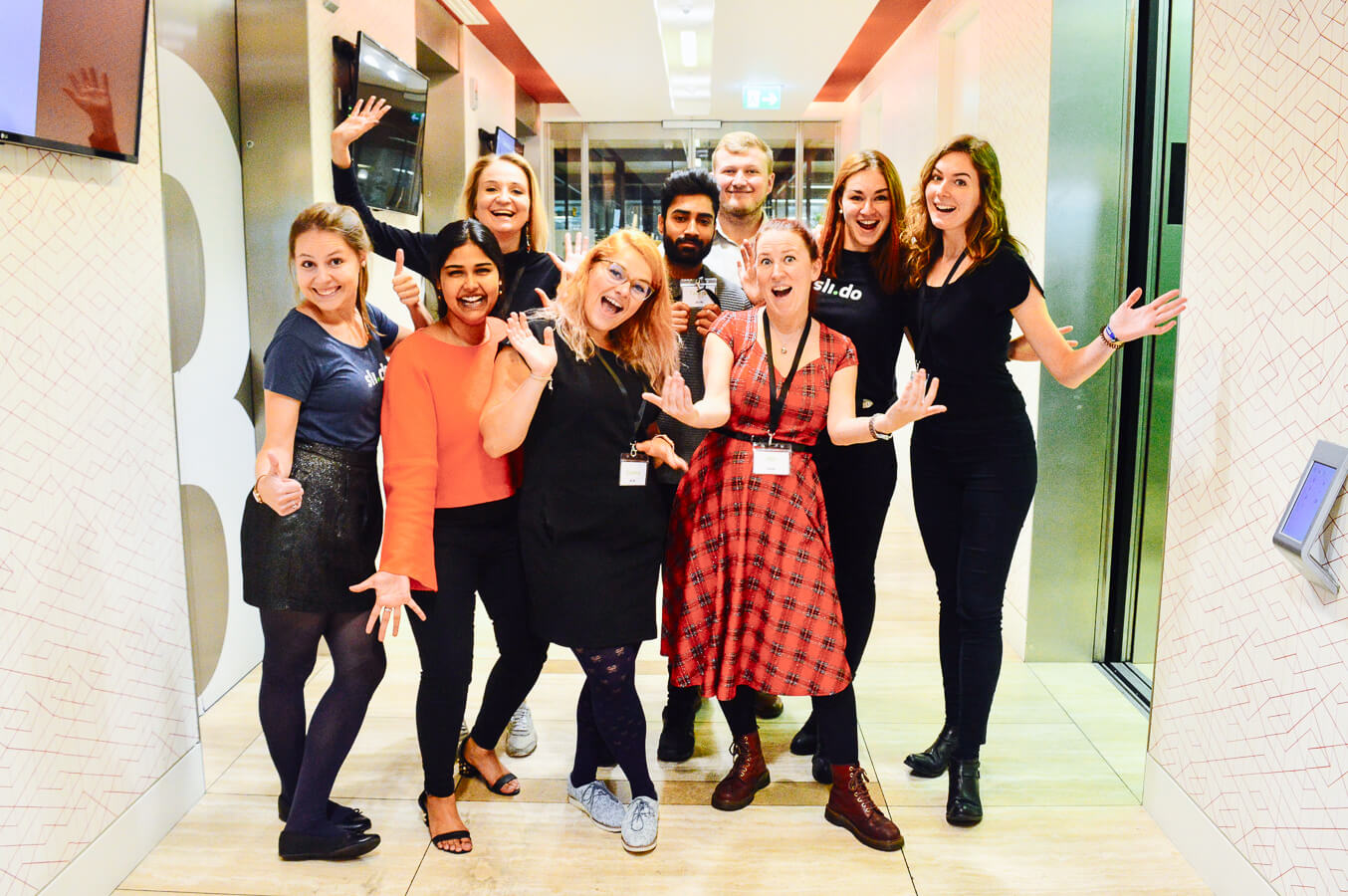
To conclude
Running roadshow events is a great way to help your clients learn about your product, get the latest updates and hear about fresh use cases. To bring the maximum value to your customers and potential clients, ensure there is a good balance between practical learning, space to address people’s questions and networking. These tips will help you intertwine your next roadshow with interactivity and deliver a tailored experience for the attendees.

